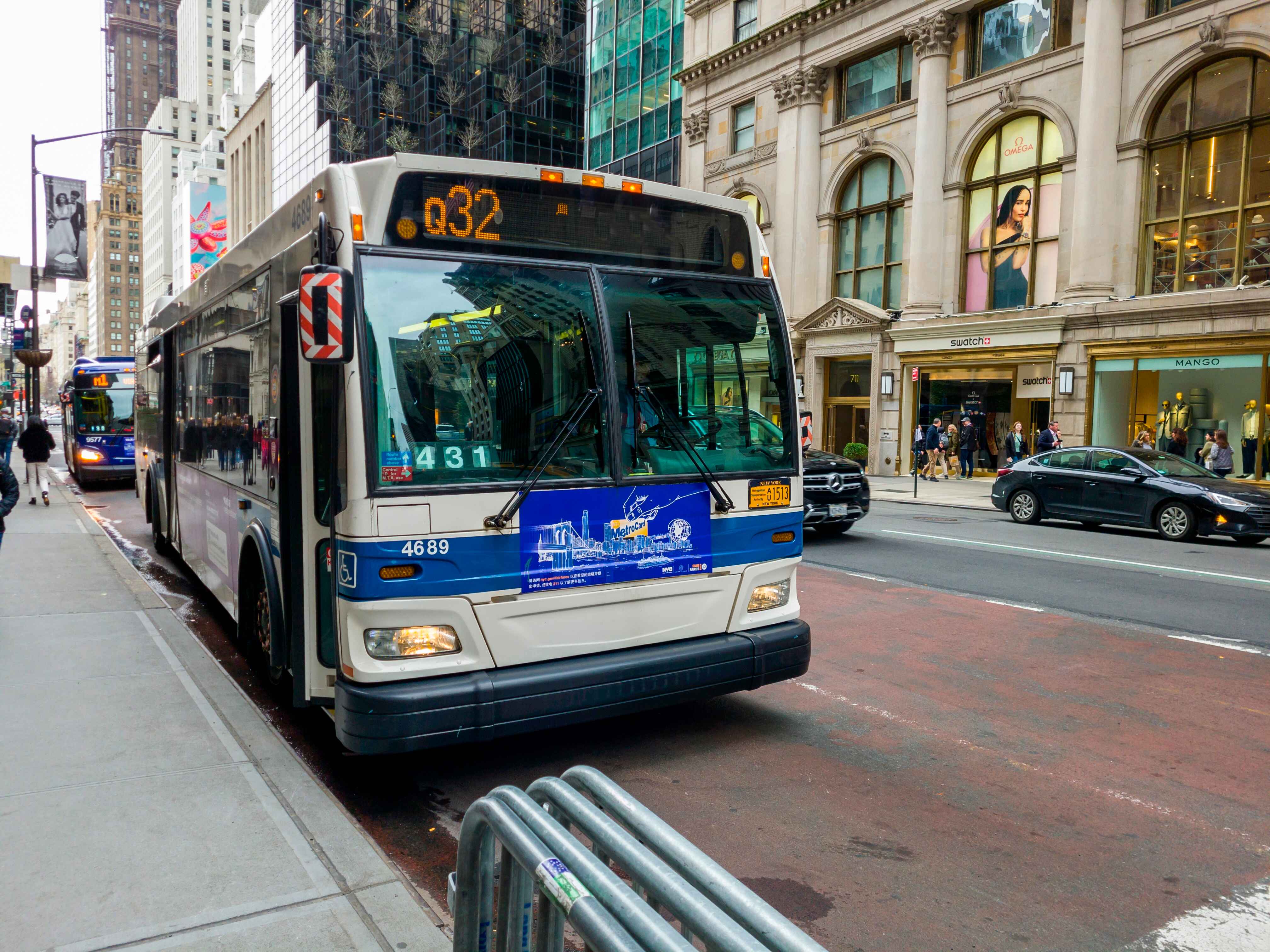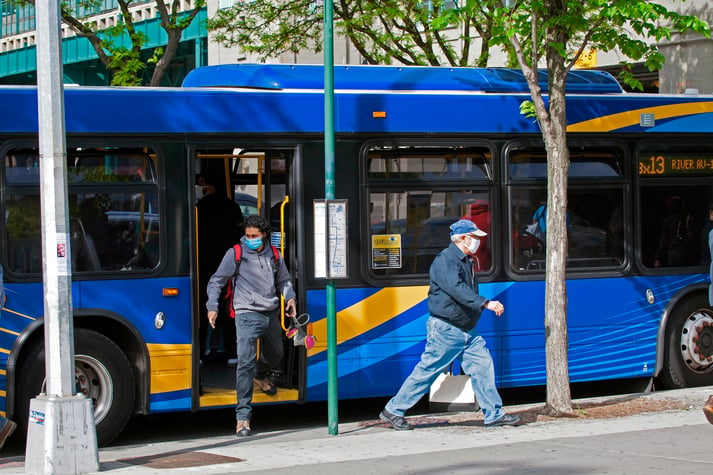
There's probably no better time than today for any player in the industry to be talking about bus fire suppression in the US.
The desire for fire suppression in buses in the US, including school buses, transit buses and long-distance coaches, has been gaining momentum over the past few years. Driven by both the awareness of the new European standards requiring fire suppression on buses and the NTSB (National Transportation Safety Board, the American Government Agency) recommendation for fire suppression on school buses, more and more owners and operators of buses are budgeting for automatic fire suppression systems for their fleets.
Fire concerns in mass transportation, and buses specifically, are not recent revelations. With efficiency at the very core of these systems, and carrying as many as 90 people in a single vehicle, most still have only two primary points of exit. And while it is true that all modern transit does allow for emergency exits, these are more challenging to access and mainly only useful if the bus has been upended.
Compounding the limited exit options with an aging population, which will largely increase evacuation time from the vehicle, plus hotter running engines with regeneration in their exhaust systems (despite their lower emissions) — all these elements will, we’re afraid, inevitably lead to a greater fire risk on American buses.
As with any risk, there are of course always methods and efforts to mitigate it. The focus area for fire suppression on buses has long been the engine area. Studies by the NFPA (National Fire Protection Association, an American nonprofit association) show that nearly 70% of bus fires are attributed to the engine, the running gear, or the tyres, and they also show that 83% are a result of mechanical or electrical failures. In buses, automatic fire suppression systems have increasingly been used since the mid 1980s. For many years, great efforts have been made to create standards and evaluations for bus fire suppression systems, with most having been at a local or country level.
Europe leads the way
In the early 2010s in Europe, the Swedish SP Institute (now RISE) – a Swedish state-owned research institute that collaborates with universities, industry and the public sector –, in conjunction with the industry, developed test method 4912 and a certification known as SPCR 183. For the 183 fire system, manufacturers submitted their systems to be tested against 10 fire tests and 1 reignition test with varying airflow conditions. This test ultimately became the basis for the European standard UNECE Regulation R107 fire systems, which were phased in by bus type, starting in 2019. In 2019, SPCR added a rating system to its standard. While the testing required a score of 6 out of 11 to be approved for 183, and only 4 out of 11 for R107, the standards only provided a system that either approved or it didn't, without indication of the underlying score. As such, a system that minimally passed, received the same approval as one which had been effective across all of the tests taken. With the 2019 release of SPCR, a “Test Scenario Rating” was introduced, based on the various test scenarios passed, with ratings from a low of “E” all the way up to an “A+” award, for a system that successfully passed all the tests. Average scores can be OK sometimes, but when life safety is on the line, ensuring that the best systems are selected, and not the average ones, can have a dramatic effect – especially when there may be little or no price difference between a C or D or an A+!

Buses and coaches carry a large number of passengers on a daily basis meaning that in the event of a fire, there is a significant risk of injury and loss of life. Fire suppression systems are designed to detect and suppress a fire quickly, reducing the risk of injury and damage to property. In this article, we will discuss Reacton's Fire Suppression Systems for Buses and Coaches and how they can help prevent and control fires in these vehicles.
So what about North America?
While the UNECE R107 is targeting Europe, its effects have been felt far beyond the region. Countries around the world, especially those who are very dependent on bus transport, have adopted the standard for themselves to ensure that their passengers are safe, protected by a system that has had a proper evaluation, whilst many are also not incorporating the “Scenario Rating” as part of their specification. In the United States, while no national requirement or standard has been developed, many major cities have added either the SPCR 183 or UNECE R107 as part of their system specifications. Further, following the US National Transportation Safety Board’s recommendation that all school buses be equipped with automatic fire suppression systems, this has left school districts and bus manufacturers alike faced with the task of finding and evaluating fire system options. And many are also looking to the European standards for guidance.
Where to begin
Performance: For bus operators looking to add protection for their passengers and protect their fleet with fire suppression, an obvious starting point is the European standards. It is a good idea to ask if the fire suppression system has been evaluated, and if so, what rating it was given. As mentioned before, increasing performance is not always tied to an increase in system cost.
Suppression Agents: Generally, when it comes to bus fire suppression in the US there are two options of agents to choose from: there are dry chemical powders, and wet agents. While the wet agents tend to be slightly more compact, based on the European testing, the number of nozzles required for an approved system can be over 3 times more, and typical system ratings are C or D. On the other hand, powder based systems tend to be a little on the larger side but they require fewer nozzles and more often receive A or A+ ratings.
Clean up: Post fire, systems of either type require an engine compartment cleaning. A thorough steam cleaning is usually sufficient.
Reset time: When a system has done its job, getting the bus fixed and back in service in the fastest time possible becomes the next goal. Readily available replacement parts are critical.
Fire detection: Fire detection is also an important consideration. Fast, effective and reliable detection is critical. There are many types of sensors and detection systems available. Choosing one that is easy to maintain, and where functionality can be easily and regularly verified is critical.
As you can see, things are changing in regards to bus fire suppression in the US. Industry agents have to be quick to act, adapting to new standards which have the ability to save thousands of human lives.
If you’re operating in the US and you're looking to adapt your fleet, equipping it with the best fire suppression system for buses on the market, then Reacton is the go to company for expert advice.
Our dedication to achieve the highest standard of certification gives you the confidence and trust you need in a Fire Suppression System.
Protecting your future, Today.
Contact us today
For more information on Reacton Fire Suppression products, please get in touch with the team by emailing info@reactonfire.com or call us on + 44 (0)800 0306526 (UK Office), +1 844 7322866 (USA Office) or +971 56 759 9490 (UAE Office)
These Stories on Vehicle Fire Suppression
Reacton HQ - UK and Europe
14 Baynes Place, Waterhouse Business Park, Chelmsford, Essex, CM1 2QX, UK
Reacton Americas
23335 N 18th Dr #140, Phoenix,
AZ 85027, United States
Reacton UAE
SIDRA Tower, Office 905,
Sheikh Zayed Road, Dubai, UAE
No Comments Yet
Let us know what you think